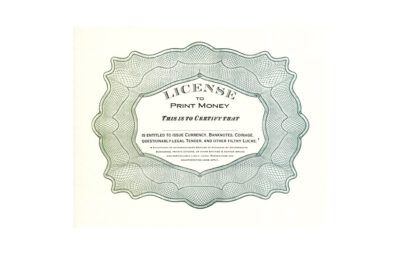Job Creation via Jobless Benefits and Fed Money Printing: Signs of a Modern Day Depression
When reading Wall Street Journal stories such as CBO: Unemployment Extension Would Add 300,000 Jobs, it’s easy to come away with the impression that the economic world we live in is radically different than it was just a few years ago. And, now almost three-and-a-half years after the Great Recession officially ended in 2009, when perusing Wall Street Journal reports such as Fed Stimulus Likely in 2013, it’s not hard to conclude that we are living in a modern day depression.
The times are surely different than 80 years ago, one of the biggest differences being how the federal government has responded to this economic crisis, and therein lies a frightening possibility for our collective future for anyone who thinks the malinvestment that developed during another historic asset bubble must be purged before sound economic growth can continue – if the Great Depression lasted a decade with far less government support, how long might the current slowdown persist, given that large swaths of the economy are being propped up by massive deficit spending and money printing in Washington?
Perhaps more importantly, have the borrowing and spending efforts by elected officials and the money printing actions of central bankers in recent years set us on a cataclysmic course, one that wasn’t even possible 80 years ago?
Without reading the first sentence in the first story noted above about extending unemployment benefits, you get the clear impression that the financial media and policymakers may have reached a new level of desperation in their quest for more jobs and stronger economic growth.
To be sure, it is the job of the CBO (Congressional Budget Office) to do all sorts of calculations to help policymakers make decisions, but when borrowing another $30 billion to continue extended jobless benefits directly translates into “adding” 300,000 jobs to the U.S. economy (and boosting growth to boot), something is seriously wrong with what the CBO is being asked to do these days.
If the U.S. government was sitting on piles and piles of money, one might argue that they should just write checks to all U.S. citizens – not just the unemployed – and this would give the economy a real boost, but nearly half of what the government spends is borrowed money, though this seems to bother fewer and fewer people with each passing day, particularly since the election earlier this month.
Some 15 million families (or almost 50 million Americans) now rely on food stamps that account for a whopping 80 percent of the $1 trillion “Farm Bill” passed by the Senate last summer. While no one likes to see people go hungry, it’s worth pondering the long-term impact of making food stamps as easy to use as swiping a credit card, that is, rather than the stigma and inconvenience associated with Depression era breadlines.
The fact that the nation has a major obesity problem and that consumers still find a way to fund holiday purchases during the madness otherwise known as “Black Friday” make this an even more intriguing comparison to the 1930s, one that historians will no doubt delight in analyzing many years from now.
But, probably the most disturbing comparison between the 1930s and today is the lengths to which the Federal Reserve has gone to aid the ailing economy, already printing about $2 trillion in new money to buy housing and government debt and, as detailed in the second Wall Street Journal story above, now likely to up their money printing efforts to about a trillion dollars a year, until such time that the economy improves.
Never before has the central bank printed so much money with so little impact and this is another important distinction between 80 years ago and today – nobody knows where the Fed’s past and future actions will lead.
Most historians credit the onset of World War II and the resulting surge in U.S. war-related exports to Europe for pulling the economy out of its decade-long funk,however, there is nothing of that scale on the horizon to turn things around during our modern day depression.
Continue reading at 24hgold.com…
By Tim Iacono













